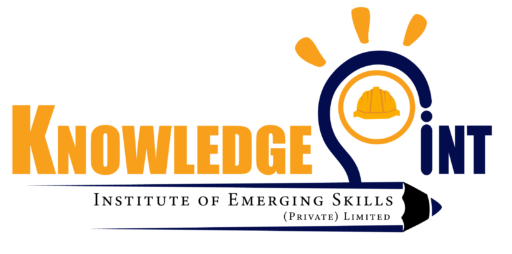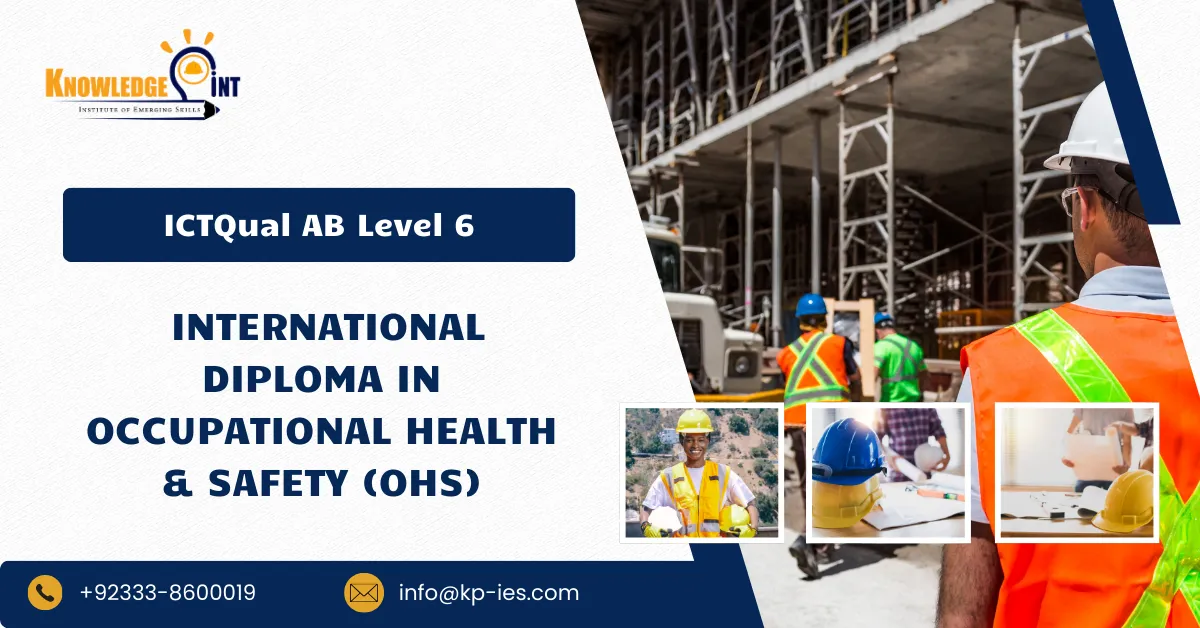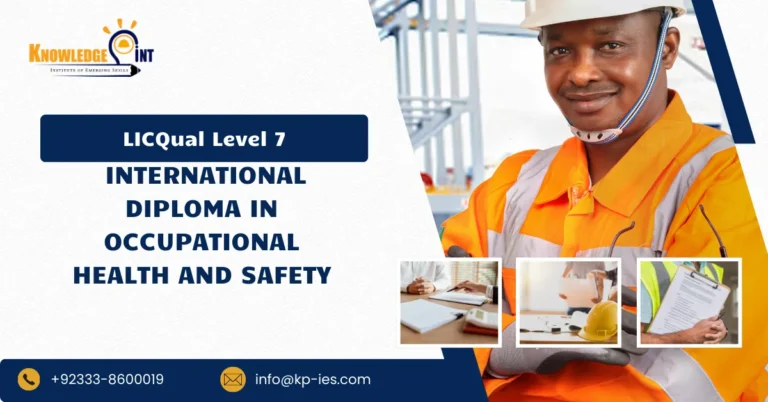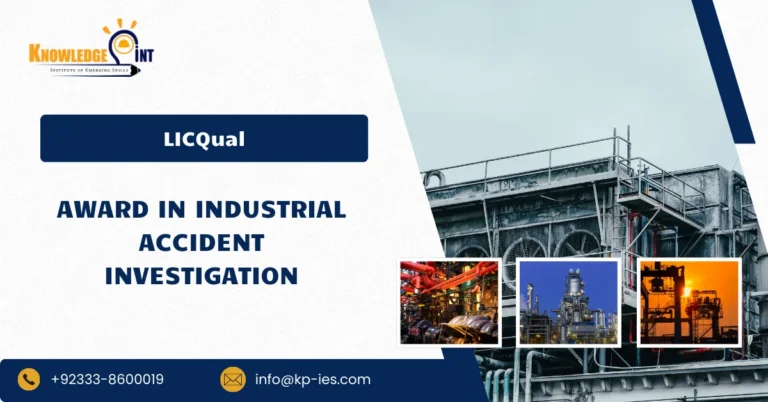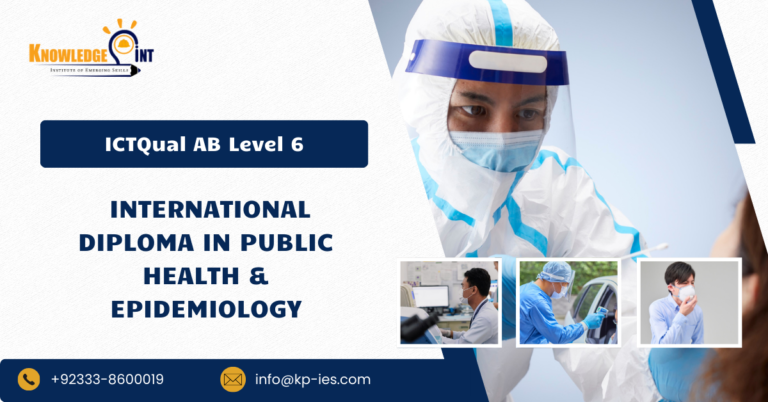Ensuring safety and managing risks in industrial environments is a critical responsibility across manufacturing, construction, energy, and high-risk sectors worldwide. The ICTQual AB Level 6 International Diploma in Industrial Safety & Risk Management is a comprehensive three-year programme, comprising 360 credits, designed to equip learners with advanced expertise in industrial safety, hazard management, and risk assessment. This qualification provides both theoretical knowledge and practical skills, enabling learners to implement effective safety strategies, comply with international safety standards, and lead risk management initiatives across diverse industrial contexts.
The programme is tailored to suit both learners who are new to the field and experienced professionals seeking to formalise and enhance their existing skills. Fresh learners will progress through structured study units covering fundamental and applied safety principles, risk evaluation, industrial legislation, and practical safety management. Experienced professionals can leverage their prior work experience through assessment pathways that recognise existing competence, allowing them to focus on advanced leadership, strategic decision-making, and complex risk management scenarios.
Learners will develop the ability to identify and control hazards, implement risk mitigation measures, conduct safety audits, and promote a culture of safety within their organisations. The diploma also emphasises strategic leadership, sustainable safety practices, and the use of modern safety technologies to improve operational performance.
Course Overview
This qualification, the ICTQual AB Level 6 International Diploma in Occupational Health & Safety (OHS), consists of 36 mandatory units.
Year 1 – Foundation of Industrial Safety & Risk Management
- Principles of Industrial Safety Management
- Introduction to Risk Management in Industrial Environments
- Occupational Health and Industrial Hygiene Fundamentals
- Workplace Hazard Identification and Control Measures
- Safety Legislation and Regulatory Compliance
- Fire Safety and Emergency Preparedness
- Manual Handling and Ergonomic Safety
- Communication and Reporting in Safety Management
- Environmental Safety and Sustainability
- Electrical and Mechanical Safety Awareness
- Incident Investigation and Root Cause Analysis
- Professional Ethics and Responsibility in Safety Practice
Year 2 – Applied Industrial Safety & Risk Management
- Advanced Risk Assessment and Hazard Control
- Safety Performance Monitoring and Auditing
- Process Safety Management and Hazardous Substances
- Industrial Safety in Manufacturing and Heavy Industries
- Safety Management in Construction and Energy Sectors
- Occupational Diseases and Preventive Measures
- Behavioural Safety and Human Factors
- Safety Culture Development and Change Management
- Safety Technology and Digital Tools
- Emergency Response Planning and Crisis Management
- International Legal and Regulatory Frameworks
- Research Methods and Data Analysis for Safety Management
Year 3 – Strategic Leadership in Industrial Safety & Risk Management
- Strategic Safety Leadership and Governance
- Integrated Management Systems (ISO 45001, ISO 14001, ISO 9001)
- Business Risk Management and Sustainability
- Advanced Occupational Health & Wellbeing Strategies
- Safety in Large-Scale Industrial Projects
- Corporate Social Responsibility and Ethical Safety Practices
- International Standards and Global Safety Frameworks
- Digital Transformation and Emerging Trends in Safety
- Policy Development and Implementation in Safety Management
- Research Project / Dissertation in Industrial Safety
- Professional Development and Lifelong Learning
- Capstone Project: Practical Application of Safety Leadership
Learning Outcomes for theICTQual AB Level 6 International Diploma in Occupational Health & Safety (OHS) 360 Credits – Three Years:
Year 1 – Foundation of Industrial Safety & Risk Management
1. Principles of Industrial Safety Management
- Explain the core principles of industrial safety management and their application in workplace environments.
- Analyse organisational structures and safety responsibilities to prevent hazards.
2. Introduction to Risk Management in Industrial Environments
- Identify common workplace hazards and risks.
- Apply basic risk assessment techniques to control and mitigate hazards.
3. Occupational Health and Industrial Hygiene Fundamentals
- Understand occupational health principles and workplace hygiene standards.
- Recognise exposure risks and recommend preventive measures.
4. Workplace Hazard Identification and Control Measures
- Identify physical, chemical, and biological hazards.
- Propose suitable control measures to mitigate identified risks.
5. Safety Legislation and Regulatory Compliance
- Explain key safety legislation and regulatory requirements.
- Evaluate organisational compliance with legal safety standards.
6. Fire Safety and Emergency Preparedness
- Assess fire risks and implement prevention strategies.
- Develop emergency response plans for workplace incidents.
7. Manual Handling and Ergonomic Safety
- Apply ergonomic principles to reduce workplace injuries.
- Recommend safe manual handling and task design practices.
8. Communication and Reporting in Safety Management
- Demonstrate effective communication strategies for safety reporting.
- Prepare documentation and reports to support compliance and incident management.
9. Environmental Safety and Sustainability
- Identify environmental hazards and their impact on industrial operations.
- Recommend sustainable practices to reduce workplace and environmental risks.
10. Electrical and Mechanical Safety Awareness
- Identify electrical and mechanical hazards in industrial settings.
- Implement safety procedures to prevent accidents and injuries.
11. Incident Investigation and Root Cause Analysis
- Conduct basic investigations into workplace incidents.
- Identify root causes and recommend corrective and preventive actions.
12. Professional Ethics and Responsibility in Safety Practice
- Apply professional ethics and responsibility in safety management.
- Demonstrate accountability and ethical decision-making in industrial safety contexts.
Year 2 – Applied Industrial Safety & Risk Management
1. Advanced Risk Assessment and Hazard Control
- Conduct comprehensive risk assessments in complex industrial environments.
- Evaluate and improve hazard control measures to reduce workplace risks.
2. Safety Performance Monitoring and Auditing
- Develop systems for monitoring safety performance.
- Conduct audits and assess organisational compliance with safety standards.
3. Process Safety Management and Hazardous Substances
- Identify process-related hazards and risks.
- Implement safe management practices for hazardous substances.
4. Industrial Safety in Manufacturing and Heavy Industries
- Analyse safety risks specific to manufacturing and heavy industry sectors.
- Implement sector-specific safety controls and protocols.
5. Safety Management in Construction and Energy Sectors
- Identify hazards in construction and energy projects.
- Apply industry-specific safety standards to mitigate risks.
6. Occupational Diseases and Preventive Measures
- Recognise occupational illnesses and their causes.
- Develop and implement preventive health strategies.
7. Behavioural Safety and Human Factors
- Analyse the influence of human behaviour on workplace safety.
- Apply behavioural safety techniques to reduce incidents.
8. Safety Culture Development and Change Management
- Develop strategies to foster a strong safety culture.
- Apply change management principles to implement safety improvements.
9. Safety Technology and Digital Tools
- Utilise digital tools for hazard identification and safety monitoring.
- Assess the effectiveness of technology in enhancing workplace safety.
10. Emergency Response Planning and Crisis Management
- Develop and evaluate emergency response plans.
- Lead crisis management initiatives in industrial settings.
11. International Legal and Regulatory Frameworks
- Compare international safety laws and standards.
- Apply global regulatory frameworks to ensure compliance across multi-national operations.
12. Research Methods and Data Analysis for Safety Management
- Conduct research and analyse safety-related data.
- Apply evidence-based decision-making to improve safety performance.
Year 3 – Strategic Leadership in Industrial Safety & Risk Management
1. Strategic Safety Leadership and Governance
- Demonstrate leadership in safety management at organisational level.
- Develop governance strategies to ensure long-term compliance and safety excellence.
2. Integrated Management Systems (ISO 45001, ISO 14001, ISO 9001)
- Apply integrated management system principles to improve workplace safety.
- Evaluate organisational compliance with ISO standards.
3. Business Risk Management and Sustainability
- Assess industrial risks and integrate sustainability in safety management.
- Implement frameworks to align risk management with organisational objectives.
4. Advanced Occupational Health & Wellbeing Strategies
- Design workplace health and wellbeing programmes.
- Integrate wellbeing strategies into safety management practices.
5. Safety in Large-Scale Industrial Projects
- Identify and manage risks in complex industrial projects.
- Apply advanced planning and control strategies to ensure project safety.
6. Corporate Social Responsibility and Ethical Safety Practices
- Develop safety policies aligned with ethical and CSR principles.
- Promote ethical decision-making and accountability in safety management.
7. International Standards and Global Safety Frameworks
- Analyse and apply international safety standards and frameworks.
- Evaluate global compliance and performance metrics.
8. Digital Transformation and Emerging Trends in Safety
- Assess emerging safety technologies and trends.
- Implement digital solutions for hazard identification, monitoring, and reporting.
9. Policy Development and Implementation in Safety Management
- Develop and implement effective organisational safety policies.
- Evaluate policy effectiveness and recommend improvements.
10. Research Project / Dissertation in Industrial Safety
- Conduct independent research on a relevant safety topic.
- Analyse findings and provide evidence-based recommendations.
11. Professional Development and Lifelong Learning
- Demonstrate commitment to continuous professional development (CPD).
- Apply reflective practice to enhance professional competence.
12. Capstone Project: Practical Application of Safety Leadership
- Plan and execute a comprehensive safety improvement project.
- Integrate theoretical knowledge, practical skills, and strategic leadership in a real-world context.
Course Benefits of ICTQual AB Level 6 International Diploma in Occupational Health & Safety (OHS)
- Provides comprehensive knowledge of occupational health and safety principles, legislation, and best practices.
- Equips learners with skills to identify, assess, and mitigate workplace hazards and risks.
- Develops expertise in safety management systems, accident investigation, and emergency preparedness.
- Enhances understanding of workplace ergonomics, environmental safety, and regulatory compliance.
- Offers practical experience through risk assessments, safety audits, and real-world case studies.
- Strengthens problem-solving, analytical, and decision-making skills for maintaining safe work environments.
- Prepares learners for leadership and advisory roles in occupational health and safety departments.
- Improves employability in construction, manufacturing, oil & gas, healthcare, and industrial sectors.
- Promotes adherence to ethical practices, workplace safety culture, and international OHS standards.
- Supports continuous professional development and specialization in advanced safety management practices.
After completing this course, learners can progress in the following ways:
- Pursue Master’s degrees in Occupational Health & Safety, Environmental Health, or Safety Management.
- Obtain professional certifications such as NEBOSH, IOSH, Certified Safety Professional (CSP), or ISO 45001 Lead Auditor.
- Advance into senior roles such as Safety Manager, Health & Safety Officer, Risk Assessment Specialist, or Environmental Health Advisor.
- Work with construction companies, manufacturing industries, oil & gas facilities, healthcare institutions, and government safety authorities.
- Progress into leadership and executive positions, managing organizational safety programs and compliance initiatives.
- Engage in research and development, improving workplace safety strategies, risk mitigation techniques, and occupational health policies.
- Transition into specialized areas such as industrial hygiene, environmental safety, fire safety management, or ergonomics.
